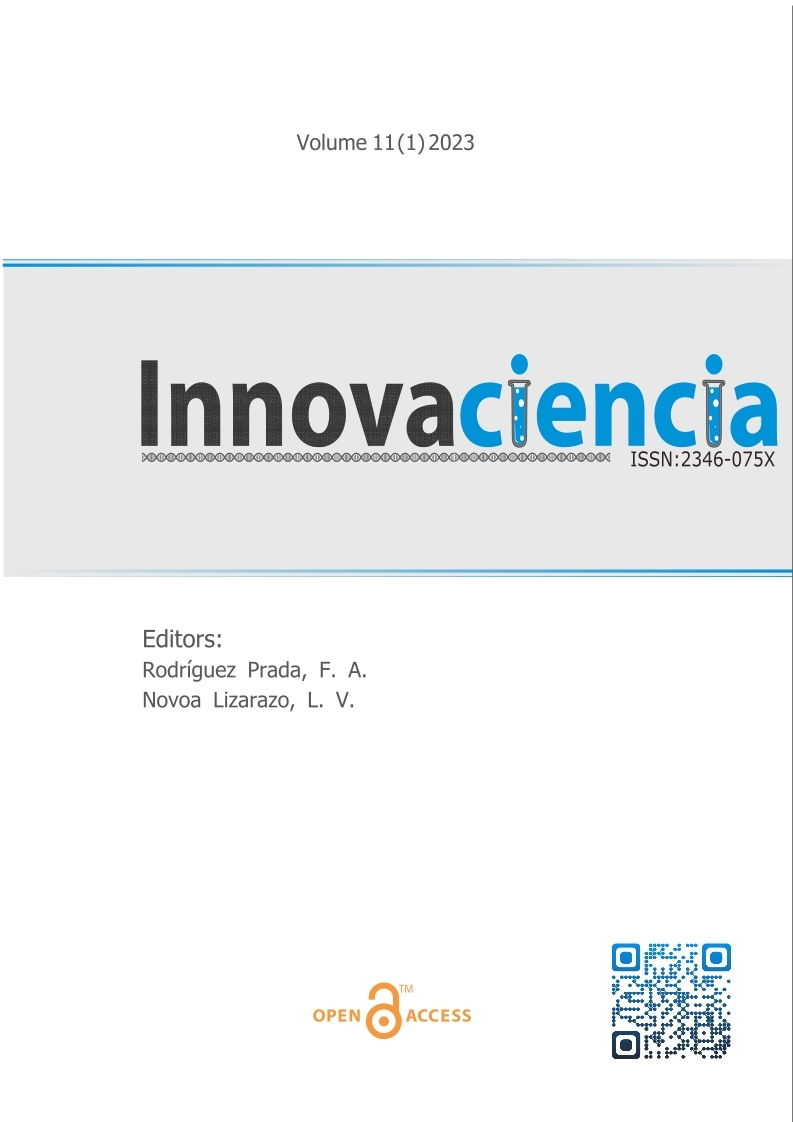Predicción de variables del modelo de capacidad indirecta de aceptación de brechas – Brecha
DOI:
https://doi.org/10.15649/2346075X.3540Palabras clave:
Transport engineering, Traffic flow, Road networks, Critical interval, CongestionResumen
Introduction: The research relevance is determined by the assessment of the capacity of roundabouts and their efficiency are extremely important topics in transport engineering research. As road networks are constantly growing in size and complexity, congestion and insufficient flow capacity are becoming serious problems for traffic. The research aims to determine the critical interval at a certain roundabout using several statistical methods and to compare the results obtained by each of them, respectively. Material and Methods: The statistical methods used in the study included the Ruff, Wu, Troutbeck, Ashworth, and standard deviation methods. Results and Discussion: The results of the study show that the difference between the five methods is minimal, although each method has its characteristics. The analysis of the critical interval for the left and right bands showed that different methods may vary in their estimates, but the overall picture remains within acceptable convergence. The difference between the Wu method and the other methods was found to be negligible, except for the Ashworth method, which has a significant difference in the definition of the critical interval. Conclusion: Thus, all five methods can generally be used to calculate the critical interval at roundabouts. However, due to its simplicity and reliability, the Wu method was recommended for use. The practical significance of the study is that the results provide important guidance and information for the design and management of roundabouts. Estimation of the critical spacing is key to determining the optimal traffic flow regime, which affects safety, flow capacity and convenience for drivers.
Referencias
Al-Jameel HA, Kadhim AJ. Modeling driver behavior for two and three lane sections in Iraqi Ru Ral roads. Al-Qadisiyah J Eng Sci. 2017;10(4):431-450. https://doi.org/10.30772/qjes.2023.178993
Muslim H, Itoh M. Driver behavior in overtaking accidents as a function of driver age, road capacity and vehicle speed: A case study in Iraq. In: Driving Assessment Conference (pp. 328-334). Iowa City: The University of Iowa; 2019.
Shadhan LQ, Alkaissi ZA. 2022. Modeling critical gap of Al Turkmani roundabout in Baghdad City. Eng Technol J. 2022;40(5):722-731. https://doi.org/10.30684/etj.v40i5.1628
Shubber KHH. Traffic volume and waiting time influence on gap acceptance of selected change direction U-turn opening. Periodicals Eng Nat Sci. 2022;10(2):418-426.
Mansoor Al- Al-Kubaisy YA. Evaluation and improvement of traffic operation at Kahtan square in Baghdad City. Iraqi J Civil Eng. 2008;5(12):43-64.
AbdulMawjoud AA. Headway modeling in northern Iraqi two-lane highways. Acad J Nawroz Univ. 2018;7(4):1-8. https://doi.org/10.25007/ajnu.v7n4a265
Sahraei MA. Comparative investigation of the critical gap at priority junctions: A review paper. Future Transportation. 2023;3(2):479-497.
Al Hasanat H, Schuchmann G. Critical gap in roundabouts – A short comparison of estimation methods. Periodica Polytechnica Transportation Eng. 2022;50(3):273-278.
Vinayaraj VS, Arkatkar S, Joshi G, Parida M. Examining pedestrian critical gap analysis at un-signalized midblock crosswalk sections in India. Transportation Res Procedia. 2020;48:2230-2250. https://doi.org/10.1016/j.trpro.2020.08.280
Dutta M, Ahmed MA. Critical gaps at three-legged unsignalised intersections using microsimulation. Proc Inst Civil Engineers Transport. 2020;176(4). https://doi.org/10.1680/jtran.20.00050
Khan T, Vivek AK, Mohapatra SS. Comparative appraisal of critical gap estimation techniques in the context of U-turning vehicles. Transportation Res Rec. 2021;2675(12):1408-1421. https://doi.org/10.1177/03611981211035761
Shaaban K, Hamad H. Critical gap comparison between one-, two-, and three-lane roundabouts in Qatar. Sustainability. 2020;12(10):4232. https://doi.org/10.3390/su12104232
Deepthi MS, Ramesh AA. model for estimation of critical gap and its distribution behaviour at un signalised intersections. In: Advances in Civil Engineering (pp. 537-549). New York: Springer; 2021. https://doi.org/10.1007/978-981-15-5644-9_41
Kumar AV, Sasikumar S. estimation of critical gap at mid-block median openings. Int J Traffic Transport Eng. 2020;10(4):456-467. http://dx.doi.org/10.7708/ijtte.2020.10(4).05
Guo R. Estimating critical gap of roundabouts by different methods. In: 6th Advanced Forum on Transportation of China (AFTC 2010) (pp. 84-89). New York: Curran Associates; 2010. https://doi.org/10.1049/cp.2010.1107
Vasconcelos ALP, Seco AJM, Silva AMCB. Comparison of procedures to estimate critical headways at roundabouts. Promet Traffic Transportation. 2013;25(1):43-53. https://doi.org/10.7307/ptt.v25i1.1246
Gazzarri A, Martello MT, Pratelli A, Souleyrette RR. Gap acceptance parameters for HCM 2010 roundabout capacity model applications in Italy. Civil Eng Fac Publications. 2013;1. Available from: https://uknowledge.uky.edu/cgi/viewcontent.cgi?article=1000&context=ce_facpub Accessed June 22, 2023.
Ahmad A, Rastogi R, Chandra S. Estimation of critical gap on a roundabout by minimizing the sum of absolute difference in accepted gap data. Can J Civil Eng. 2015;42(12):1011-1018. https://doi.org/10.1139/cjce-2014-0450
Azhari SF, Puan OC, Hassan SA, Mashros N, Warid MN, Lopa RS. Estimation of critical gap at small roundabout. In: IOP Conference Series: Materials Science and Engineering. Bristol: IOP Publishing; 2019. http://dx.doi.org/10.1088/1757-899X/527/1/012072
Radovic D, Mohan M, Bogdanovic V. Comparative analysis of critical headway estimation at urban single-lane roundabouts. Promet Traffic Transportation. 2022;34(2):323-336. https://doi.org/10.7307/ptt.v34i2.3902
Descargas
Publicado
Cómo citar
Descargas
Número
Sección
Licencia
Derechos de autor 2023 Innovaciencia

Esta obra está bajo una licencia internacional Creative Commons Atribución-NoComercial 4.0.
Todos los artículos publicados en esta revista científica están protegidos por los derechos de autor. Los autores retienen los derechos de autor y conceden a la revista el derecho de primera publicación con el trabajo simultáneamente licenciado bajo una Licencia Creative Commons Atribución-NoComercial 4.0 Internacional (CC BY-NC 4.0) que permite compartir el trabajo con reconocimiento de autoría y sin fines comerciales.
Los lectores pueden copiar y distribuir el material de este número de la revista para fines no comerciales en cualquier medio, siempre que se cite el trabajo original y se den crédito a los autores y a la revista.
Cualquier uso comercial del material de esta revista está estrictamente prohibido sin el permiso por escrito del titular de los derechos de autor.
Para obtener más información sobre los derechos de autor de la revista y las políticas de acceso abierto, por favor visite nuestro sitio web.
















